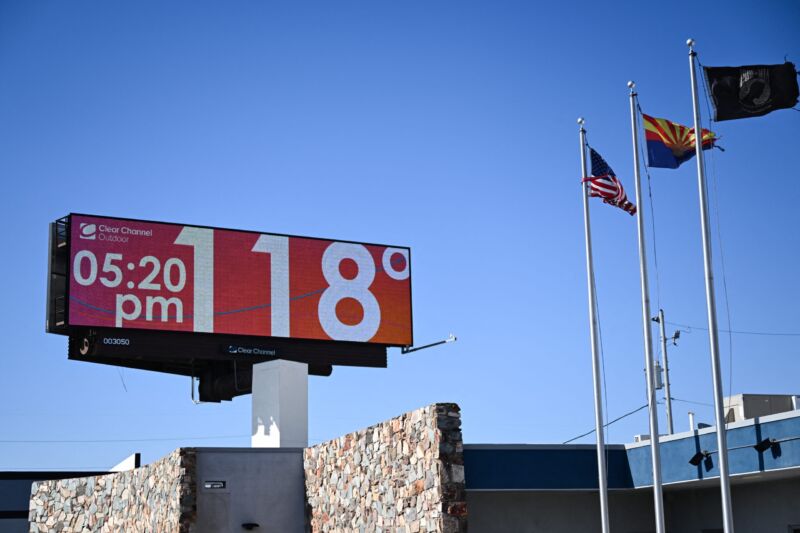Climatologists: July’s intense heat “exactly what we expected to see”

Enlarge / A billboard in Phoenix, Ariz. displays the temperature on July 18, 2023, during an unprecedented string of days with high temperatures above 110 F. (credit: Patrick T. Fallon/AFP via Getty Images)
Widespread summer heatwaves like those currently baking the Northern Hemisphere, with temperatures soaring above 110 degrees Fahrenheit simultaneously in North America, Asia, and Europe, will be common in just a few decades unless greenhouse gas emissions are immediately curtailed, an international team of scientists said Monday.
If global warming reaches 2 Celsius above the pre-fossil fuel era, such heat waves will happen every two to five years, the researchers said as they released a rapid attribution analysis of the blistering conditions experienced by hundreds of millions of people in recent weeks. If emissions continue on the same increasing path as now for a few more years, the 2 Celsius mark will be passed in about 30 years, according to the new analysis by World Weather Attribution.
In the current climate, warmed by 1.1 C (1.9 F) by humans, these extreme heatwaves are no longer rare, due to warming caused by burning fossil fuels and other human activities," the authors wrote. Events like these can now be expected approximately once every 15 years in North America, about once every 10 years in southern Europe and approximately once every five years in China."